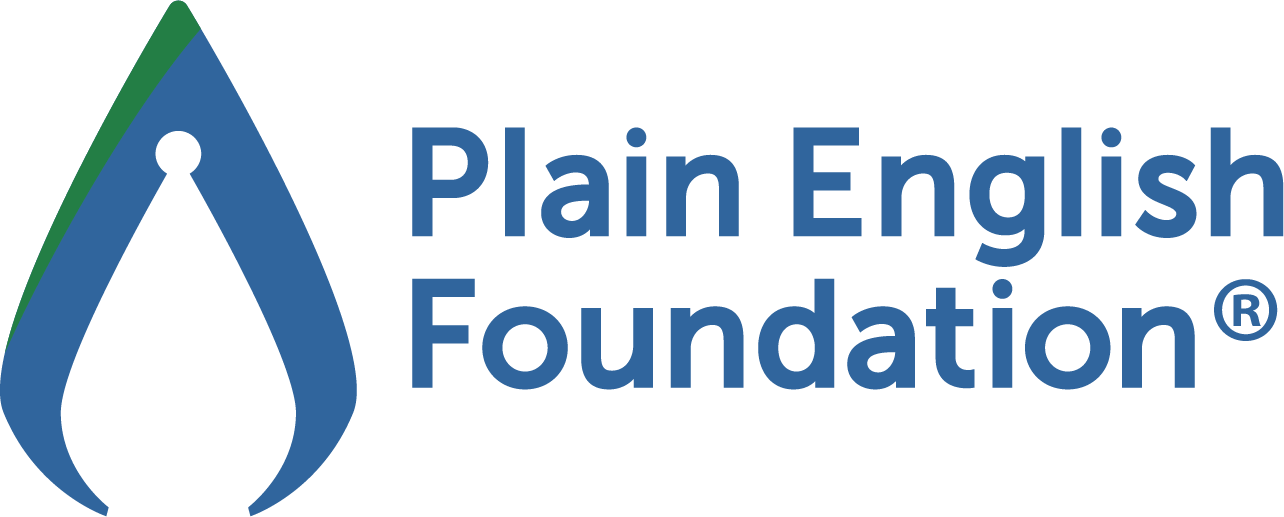The federal budget for 2019 has been released and there’s one talking point that takes the headline… it’s good news for low income earners.
The following article published by news.com.au goes into detail on what the budget means for you.
Source: www.news.com.au/finance/economy/federal-budget/what-the-2019-federal-budget-means-for-you/news-story/59f1c9f48b0819d40fae3e76b1e2f97e
Tax cuts and infrastructure spending are the headline items in this year’s Budget, but the government has big plans in other areas as well.
There’s just one catch — many of those plans will only happen if the Coalition is re-elected. So don’t get too excited.
Here are the highlights, and more importantly, what they all mean for you.
IF YOU WANT A TAX CUT
Good news! The government has delivered.
Everyone who earns between $18,200 and $126,000 in a year — more than 10 million Aussies — will receive a some form of tax cut.
Most of the tax relief will flow to those earning between $48,001 and $90,000, who will get $1080 cash back in a lump sum after they file their July 1 tax return.
IF YOU WANT FASTER TRAINS
There is a big focus on fast rail — particularly the construction of a $2 billion connection between Geelong and Melbourne. It will be the fastest train in Australia, with an average speed of 160km/h, and will cut commuters’ travel time in half to 32 minutes.
The government is also co-funding business cases for five more fast rail projects — from Sydney to Wollongong, Sydney to Parkes, Melbourne to Albury Wodonga, Melbourne to Traralgon, and Brisbane to the Gold Coast.
Of course, that doesn’t necessarily mean they’ll be built.
IF YOU CATCH NORMAL TRAINS
There is funding for the North-South Rail Link in western Sydney and a $700 million upgrade for the route from South Geelong to Warun Ponds.
If you’re someone who would commute by driving to your local station and hopping on a train, if only you could find parking, there’s something for you too. A $500 million chunk of the Urban Congestion Fund will be used to provide better park and ride facilities.
The government thinks that will take tens of thousands of cars off Australia’s roads each day.
IF YOU’RE WORRIED ABOUT CONGESTION
Speaking of the Urban Congestion Fund, its funding has been quadrupled to a total of $4 billion. It will focus on projects addressing congestion in Australia’s “worst affected” urban areas.

IF YOU DRIVE
There are lots of spending projects to improve Australia’s roads. The most significant examples: a billion for the Princes Highway, $1.6 billion to extend the M1 in NSW, $800 million for the Gateway Motorway in Queensland, $1.5 billion for the North-South Corridor in South Australia and $349 to upgrade the Tonkin Highway in WA.
There is also a significant Road Safety Package worth $2.2 billion, half of which will go to local councils to maintain and repair roads.
IF YOU HAVE CHILDREN AT SCHOOL
The government says it will increase school funding by 63 per cent over the next 10 years, from $19.9 billion in 2019 to $32.4 billion in 2029.
This year, $30.2 million will be given directly to schools and parent committees so they can fund the equipment and facilities they need, instead of being dictated to by the government.
Younger children get something too. The government will keep subsidising 15 hours of preschool a week for kids who are in their last year before primary school.
IF YOU’RE A FARMER
A total of $6.3 billion is being spent to help farmers struggling with drought.
That includes relatively large initiatives, such as $200 million to increase access to income support, and smaller ones, like a $2.5 million increase in funding to support farmers’ mental health and wellbeing.
The government is also giving $1 million each to 96 local councils affected by drought to fund infrastructure and drought relief projects.

IF YOU’RE AFFECTED BY FLOODS
There will be an additional $300 million in grants this year to help flood-affected farmers in North Queensland rebuild, replace livestock and replant crops, adding to the $232 million in relief that had already been made available. These grants will be exempt from income tax.
And $3.9 billion will be used to create an Emergency Response Fund — a stable source of funding to prepare for natural disasters and react to them in the future.
IF YOU LIVE IN A REGIONAL AREA
There are a few different initiatives to improve services in regional Australia, including $200 million to create jobs and drive economic growth, $220 million to improve internet and mobile services, and $100 million to upgrade regional airport infrastructure.
The government is also rolling out a series of “Regional Deals”, which focus on developing specific areas. There are three of them to begin with, covering the Tennant Creek region in the NT, the Bundaberg and Hervey Bay area in Queensland, and Albury Wodonga on the border of NSW and Victoria.
IF YOU RUN A REGIONAL BUSINESS
The Budget’s focus on infrastructure extends to the regions. A billion dollars are being added to the Roads of Strategic Importance initiative, which invests in rural roads across Australia and upgrades key freight routes to connect the agriculture and resource sectors to urban markets.
IF YOU’RE A UNIVERSITY STUDENT
University funding will keep increasing, from $17.7 billion this year to $20 billion by 2024. The budget provides $93.7 million over four years to give scholarships to students who want to study at a regional campus.
The University of Melbourne is getting an underground physics lab, which will be the first facility of its kind in the southern hemisphere.
But ultimately, the government is focusing less on university students, and more on its $525 million skills package for vocational education and training.
IF YOU’RE CONCERNED ABOUT SECURITY
The recent cyberattack on federal parliament heightened concerns that hackers, or even a foreign country, could interfere in Australian politics. The government is spending $34.8 million over four years to strengthen our ability to counter that interference.
There will be enhanced monitoring and response capabilities to protect the integrity of the upcoming federal election, including the creation of cyber “Sprint Teams”.
The Australian Federal Police and ASIO are getting beefed up with $571 in additional funding.
More broadly, the Coalition is maintaining its commitment to grow Australia’s defence budget to 2 per cent of GDP by 2020-21.
IF YOU’RE A TOURIST
The government is spending $216 million to upgrade the visitor facilities at Kakadu National Park — that means things like walking tracks, viewing platforms and wi-fi services.
It is also splashing $184 million on supporting tourism along the Great Ocean Rd and in Geelong.
IF YOU OWN A SMALL BUSINESS
Small businesses are getting tax cuts and tax breaks.
The government is fast-tracking a planned tax cut, bringing the tax rate for companies with turnover of less than $50 million down from 27.5 per cent to 26 per cent in 2020-21, then 25 per cent in 2021-22. The standard tax rate is 30 per cent.
The instant asset write-off is being extended to companies with a turnover of $50 million, up from $10 million, and the value has increased from $25,000 to $30,000 — and it can be used “every time an asset under that amount is purchased”. So if you’re a tradie, you can write off a new ute, and if you own a cafe, you can write off a new coffee machine.
IF YOU WANT TO MOVE TO AUSTRALIA
Immigration numbers are getting a slight haircut.
The permanent migration cap will be cut from 190,000 to 160,000 a year, or by 120,000 places over four years. The government says the move will reduce pressure on cities and give infrastructure a chance to catch-up.
Two new visa classes be introduced to encourage skilled workers to settle in regional areas, $64 million will be spent on “social cohesion measures” to help migrants integrate, $94 million will go towards regional scholarships, and $23.4 million will create a Centre for Population to develop population policy.
IF YOU’RE LOOKING FOR A JOB
More than half a billion dollars will go towards jobs and training.
The $525.3 million skills package includes $200.2 million for 80,000 apprenticeships in industries with skills shortages, $8.5 million for 400 training scholarships, $62.4 million to upskill at-risk workers, and $67.5 million for 10 “training hubs” in high youth unemployment areas.
Apprentice incentive payments for employers will be doubled to $8000 per placement, while apprentices will receive a $2000 payment. Eligible occupations include carpenters and joiners, plumbers, hairdressers, airconditioning and refrigeration mechanics, bricklayers and stonemasons, plasterers, bakers and pastry cooks, vehicle painters, wall and floor tilers and arborists.
IF YOU’RE ON WELFARE
There is no increase to Newstart in this year’s Budget.
The cashless welfare card is being expanded to cover more than 35,000 people.
Welfare recipients on income management in the Northern Territory and Cape York will transition to the cashless debit card from January next year, while existing trial sites will be extended until July 2021.
Jobseekers will be encouraged to go fruit picking under a $24.1 million expansion of Harvest Labour Services from 11 to 16 growing regions. Jobseekers who take up harvest work will receive four-week, 12-week and 26-week “outcome payments”.
IF YOU’RE WORRIED ABOUT BAD BANK BEHAVIOUR
Financial regulators will get a major funding boost as part of the government’s $606.7 million response to the banking royal commission.
The Australian Securities and Investments Commission will get an extra $404.8 million, including $146 million for an “accelerated enforcement approach” to support its “new ‘why not litigate?’ strategy”, which will be helped by the creation of a new Federal Court criminal jurisdiction for the financial sector.
Australian Prudential Regulation Authority will get an extra $152 million, while an independent Financial Regulator Oversight Authority will be established to the tune of $7.7 million to report on ASIC and APRA’s effectiveness.

IF YOU CARE ABOUT SUPPORTING OUR NEIGHBOURS
Foreign aid spending will be held at $4 billion a year before increasing to $4.1 billion in 2022-23 when indexation recommences.
A record $1.4 billion will go towards Pacific countries as part of a strategy to counter China’s influence in the region, with the lion’s share of $512.3 million going to Papua New Guinea. Indonesia will be the second biggest beneficiary with $255.7 million.
Up to $200 million will go towards the Coral Sea Cable System to improve internet access in PNG and the Solomon Islands. The government will also spend $200 million on climate change programs in developing countries and $55 million on a Gender Equality Fund.
IF YOU HAVE A DISABILITY
The government will provide $528 million over five years to establish a royal commission examining violence, abuse, neglect and exploitation of people with disabilities.
And it is continuing the implementation of the National Disability Insurance Scheme. Agreements to commence the full scheme in the ACT and Northern Territory from July 1 this year have been finalised. As the NDIS keeps expanding, its cost to the budget will grow from $44 billion in 2018-19 to $55 billion in 2022-23.
IF YOU DON’T WANT TO PAY THE MEDICARE LEVY
The income threshold for paying the Medicare levy will slightly increase.
Singles can now earn up to $22,398 (up from $21,980) before they have to pay the levy. The threshold for families will be $37,794, seniors and pensioners who are single can earn up to $35,418 and seniors and pensioners with family up to $49,304. For each dependent child or student, family income thresholds rise by another $3,471.
IF YOU ARE STRUGGLING WITH POWER BILLS
About 3.9 million Australians will receive a one-off Energy Assistance Payment to help with their next energy bill. Singles will get $75 and eligible couples would get $125 paid before the end of the current financial year.
Veterans, carers, single parents, aged pensioners and people receiving the disability
support pension are eligible for the payment. However, those on Newstart are not.
New laws need to be passed in parliament this week (before the election is called) to ensure the payment happens.
The measure is expected to cost about $284.4 million.
IF YOU CARE ABOUT THE ENVIRONMENT
The government will address climate change and meet its 2030 carbon emissions target through a $3.5 billion package delivered over the next 15 years. It will include $2 billion for the Climate Solutions Fund, $1.38 billion in equity to support the delivery of Snowy 2.0, $56 million for the Marinus Link between Tasmania and Victoria and $400,000 to develop a National Electric Vehicle Strategy.
IF YOU ARE WORRIED ABOUT THREATENED SPECIES
Threatened species protection will get $100 million over four years with the establishment of an Environment Restoration Fund. The fund will provide grants for on-ground restoration and protection projects focusing on threatened and migratory species, their habitats, coasts and waterways, recycling and waste reduction as well as other environmental issues.
IF YOU’RE FIGHTING CANCER
Cancer services will get a significant boost of $70.8 million over seven years from 2018/19. This includes $45.5 million to establish cancer treatment centres in regional Australia for radiation therapy and $12.6 million for The Bays Healthcare Group over three years to build a cancer centre on The Bays Hospital site in Mornington.
There’s also money for 41 extra breast care nurses and 34 prostate cancer nurses.
IF YOU’RE UNWELL
The government will also put $308.9 million over five years towards improving the accessibility of services like x-rays and ultrasounds.
Out-of-pocket costs for these scans will also be reduced and the costs of some medications will also be reduced.
IF YOU NEED MEDICATION
New and amended listings on the Pharmaceutical Benefits Scheme (PBS) and the Repatriation Pharmaceutical Benefits Scheme (RPBS) include five drugs: Osimertinib, Venetoclax, Nivolumab, Brentuximab vedotin and Inotuzumab ozogamicin used for the treatment of conditions like lung cancer and leukaemia. This means some of these drugs will become cheaper for patients.
From May 1, 2019 the lifesaving drugs nitisinone (Orfadin and Nityr) used to treat Hereditary Tyrosinaemia Type-1, and cerliponase (Brineura) for the treatment of Batten Disease, will be available for free. These drugs are typically used to treat babies and young children.
IF YOU HAVE A CHRONIC DISEASE
A grants program to improve outcomes for Australians living with chronic disease will be established, costing $17.2 million over five years from 2018/19.
A new funding model will also provide an extra $448.5 million over three years from 2020/21 to better support high-needs patients.
IF YOU CARE ABOUT MEDICAL RESEARCH
The government has a $5 billion ten-year investment plan for the Medical Research Fund and will put an extra $931 million into clinical trials, consumer driven research and tackling antimicrobial and drug resistant tuberculosis.
An extra $444.6 million will also be put into frontier health, researcher exchange and training and clinical researchers.
On top of this funding, the government is spending $56 million on diabetes research, $10 million for the Lowitja Institute to support Indigenous health researchers, $10 million to establish the Curtin University Dementia Centre of Excellence and $18 million for the Charles Sturt and Western Sydney universities to establish the Institute for Regional, Rural and Remote Health and Medical Research in Orange.
IF YOU’RE WORRIED ABOUT MENTAL HEALTH
About $229.9 million over seven years will be providing to mental health services including $114.5 million from 2020/21 to trial eight mental health centres focusing on specialised support for adults (particularly after hours), improving access to mental health support for expectant and new parents and improving data on self-harm and suicide.
About $6.1 million will be provided for the establishment of Grace’s Place, a residential trauma recovery centre for children, and $5 million for a purpose-built at Repatriation General Hospital, Adelaide to help people with eating disorders.
Another $263.3 million will be provided from 2018/19 to improve access to youth mental health services.
IF YOU ARE CONCERNED ABOUT AGED CARE
Aged care regulation will get a boost including $38.4 million over five years for an information sharing system in the Aged Care Quality and Safety Commission, and $8.4 million to introduce mandatory reporting of things like pressure sores, weight loss and falls and fractures.












